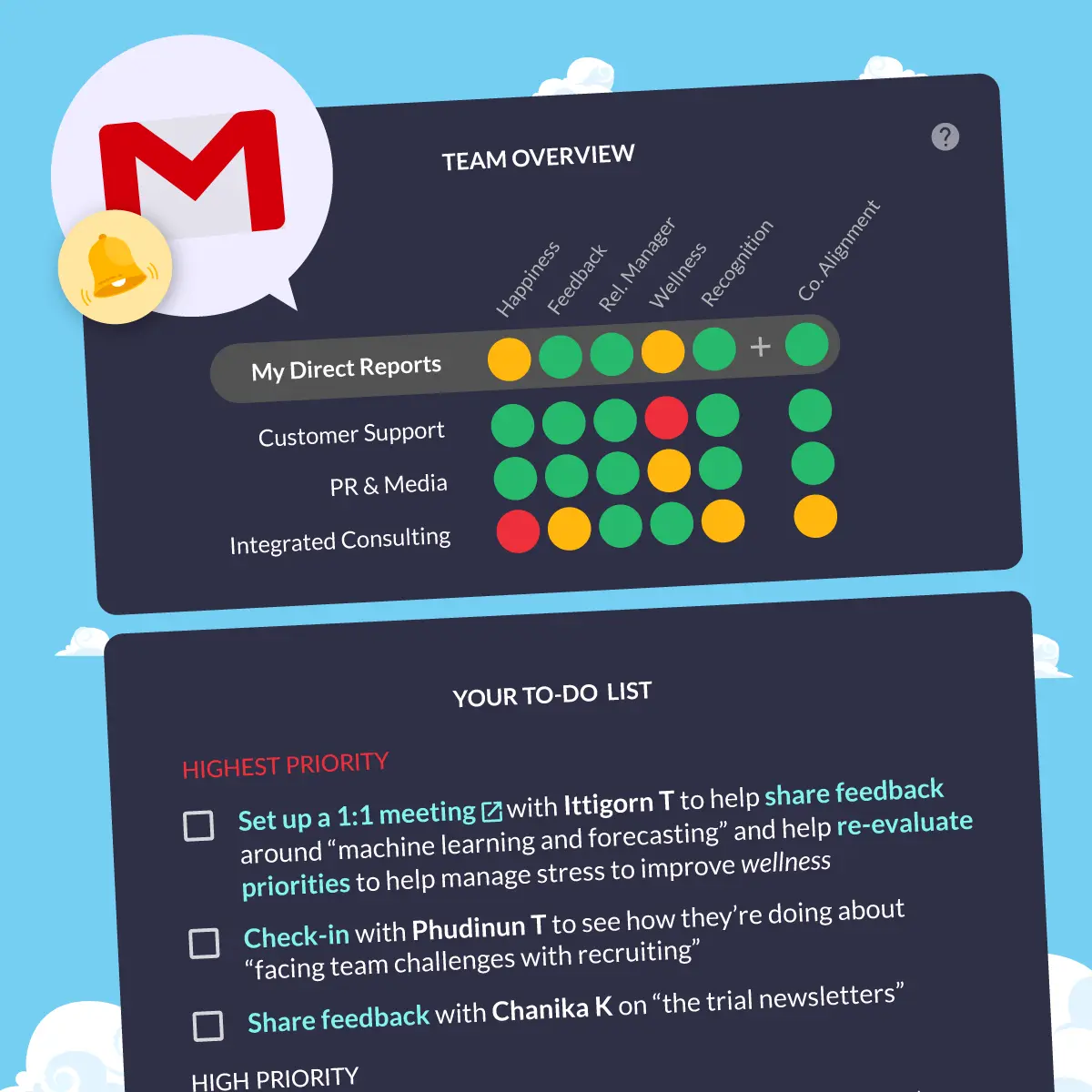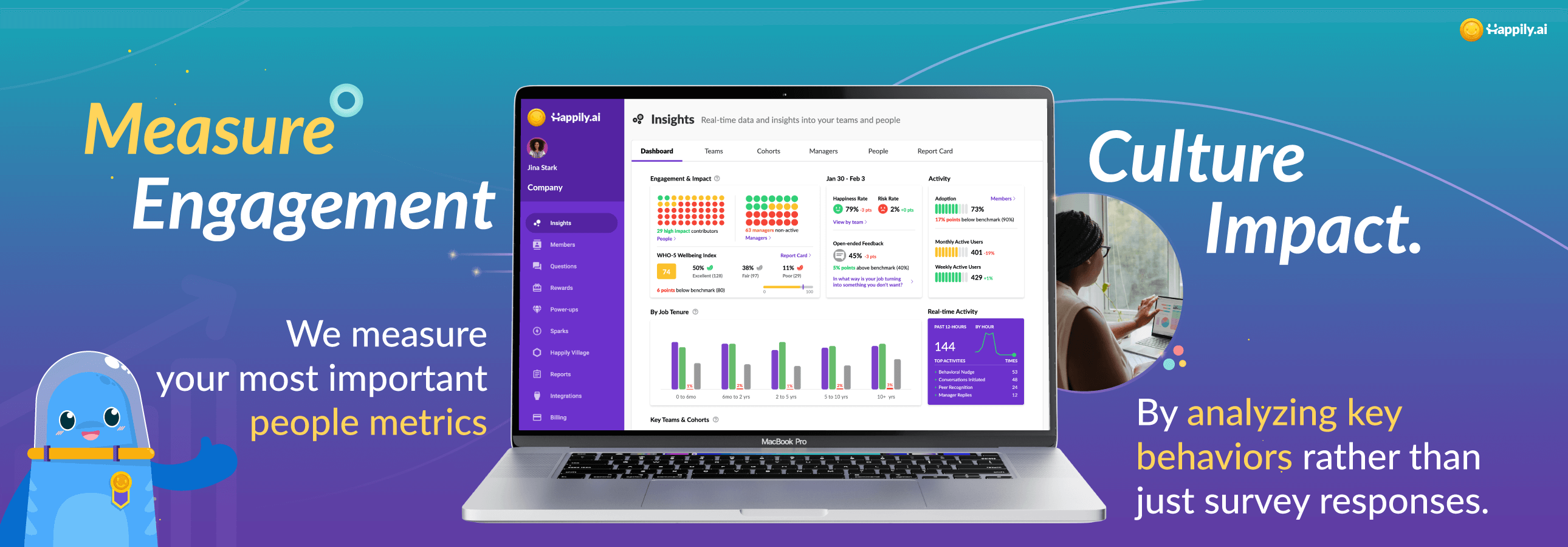According to Gallup's 2022 "State of the Global Workplace" report, out of all the workers, only 21% are fortunate enough to have an engaged work environment. The level of employee engagement is a critical factor in the success of any organization, as it directly impacts employee well-being, productivity, job satisfaction, and overall business performance. However, without a proper understanding of the drivers of engagement, business leaders may struggle to create an effective strategy for improving employee engagement levels. Therefore, there is a need to conduct an employee engagement survey to gain insights into employee attitudes and perceptions towards their job, the company, and their work environment. The survey will provide valuable data to business leaders, enabling them to identify areas of improvement, develop targeted interventions, and enhance employee engagement, leading to increased employee well-being, productivity, retention, and overall business success.
In this article, we will provide you the content as the following:
- What is an employee engagement survey?
- How often should the organization conduct the employee engagement survey?
- How do leaders and managers conduct an employee engagement survey?
- How do leaders and managers collect and analyze employee engagement survey data?
- Example of how to collect and analyze employee engagement survey data
What is an Employee Engagement Survey?
An employee engagement survey is a tool used by businesses to measure the level of employee satisfaction, motivation, and commitment toward their work and the organization. It involves gathering data through a set of standardized questions that help identify the drivers of engagement and areas of improvement.
How Often Should the Organizations Conduct the Employee Engagement Survey?
The frequency of conducting employee engagement surveys depends on various factors, such as the size of the organization, the industry, and the level of change within the company. Generally, organizations conduct employee engagement surveys once a year, but some companies choose to conduct them more frequently, such as every six months or even quarterly. However, conducting employee engagement surveys more frequently can help organizations track progress, identify changes in engagement levels, and make adjustments to their action plans in a real-time manner or more quickly.

How Leaders and Managers Conduct an Employee Engagement Survey
Conducting an employee engagement survey involves several steps:
- Define the survey objectives: Identify the specific areas you want to explore through the survey, such as employee satisfaction, motivation, and commitment towards work and the organization.
- Choose the right survey tool: Select a survey tool that is validated, reliable, and relevant to your organization's needs. Ensure your survey tool is easy to use, accessible to all employees and can generate insightful data.
- Ensure anonymity and confidentiality: Communicate to employees that their responses will remain anonymous and confidential. This encourages honest and open feedback, which will generate more accurate data.
- Set the timeline: Set a timeline for the survey that allows enough time for employees to complete the survey and for the organization to analyze the data.
- Communicate with employees: Communicate with employees throughout the process, from survey introduction to follow-up. This will help to encourage participation and improve the quality of responses.
- Analyze the survey data: Once the survey is complete, analyze the data to identify key areas for improvement. The analysis can include segmentation of data by department, age, gender, and other demographics to provide deeper insights into engagement levels across the organization.
- Develop an action plan: Develop an action plan based on the survey results to address areas for improvement. This could include targeted interventions such as training and development, improved communication, recognition and rewards, or changes to workplace policies.
- Monitor progress: Regularly monitor progress and track changes in engagement levels over time to assess the effectiveness of the interventions and adjust the action plan accordingly.
By following these steps, leaders and managers can conduct and analyze an employee engagement survey to gain valuable insights into employee perceptions and attitudes toward their work and the organization. This can help to improve employee engagement, leading to increased employee well-being, productivity, retention, and overall business success.

Employee Engagement Surveys Made Easy
Transform your organization's employee engagement strategy and drive business success with our user-friendly and real-time insights.
How Leaders and Managers Collect and Analyze Employee Engagement Survey Data
Collecting and analyzing employee engagement survey data is critical in understanding employees' needs and concerns and improving the overall work environment. The following are the steps that business leaders or managers can take to collect and analyze employee engagement survey data:
- Design the survey: The first step is to design a survey that includes questions relevant to the company's goals and objectives. The survey should cover various aspects of the employees' work environment, including job satisfaction, company culture, leadership, and communication.
- Distribute the survey: Once the survey is designed, it should be distributed to all employees. This can be done through an online survey tool, software, email, or paper surveys.
- Collect the data: After the survey is distributed, the responses should be collected and compiled in a central location. This could be an Excel spreadsheet or an online survey tool aggregating the data.
- Analyze the data: The next step is to analyze the data to identify trends and patterns, segment it by demographics, compare it with previous surveys, and prioritize areas for improvement. This could involve creating charts and graphs visually representing the data or conducting statistical analysis to identify correlations and relationships between different survey questions.
- Share the results: Once the data is analyzed, the results should be shared with the business leaders and managers. This can be done through a presentation or report highlighting the key findings and recommendations for improvement.
- Take action: Finally, business leaders and managers should take action based on the survey results. This could involve implementing new policies or initiatives to improve employee engagement or addressing specific concerns raised in the survey.
Example of How a Company Could Collect and Analyze Employee Engagement Survey Data in the Area of Well-being
Here's an example of how a company could collect and analyze employee engagement survey data in the area of well-being:
- Design the survey: The company designs a survey that asks questions related to employee well-being, such as:
Have you felt stressed or overwhelmed at work?
How would you rate your work-life balance on a scale of 0 to 10?
Do you feel that you're under an unhealthy amount of pressure?
What keeps you up at night these days?
How often do you take breaks during the workday? - Distribute the survey: The survey is distributed to all employees via an online survey tool.
- Collect the data: The responses are collected and compiled using the online survey tool in a central location.
- Analyze the data: The survey data is analyzed by creating charts and graphs that visually represent the data. For example, the company could create a chart that shows the percentage of employees who feel stressed at work. The data could also be analyzed statistically to identify correlations and relationships between different survey questions. The company, for instance, could look at whether there is a correlation between work-life balance and job satisfaction.
- Share the results: The survey results are shared with business leaders and managers through a report highlighting the key findings and recommendations for improvement. For example, the report might recommend that the company offer more flexible work arrangements to improve work-life balance or recommend managers set up 1:1 meetings with their direct reports to enhance company alignment.
- Take action: The company takes action based on the survey results. For example, the company might implement a flexible work arrangement policy or offer employees additional health and wellness benefits.
The employee engagement survey focusing on employee well-being provides valuable insights into the well-being of its employees. It allows the company to take action to improve employee well-being, satisfaction, and engagement.

Employee Engagement Survey Data Made Practical
User-friendly and real-time insights that make analyzing employee engagement survey data practical for any organization.
Conclusion
Employee engagement is crucial for any organization's success, and conducting an employee engagement survey is necessary to understand employee attitudes and perceptions. With our comprehensive guide on an employee engagement survey, how often to conduct it, and how to collect and analyze the data, business leaders can make informed decisions to enhance employee engagement and drive overall business success.
Keeping in mind, it's also important to note that simply conducting employee engagement surveys is not enough to improve engagement levels. Organizations must act on the feedback received, communicate with employees about the changes being made, and track progress over time to ensure that engagement levels are improving. Don't wait any longer; take the first step towards creating a more engaged and productive workforce by conducting an employee engagement survey today!










